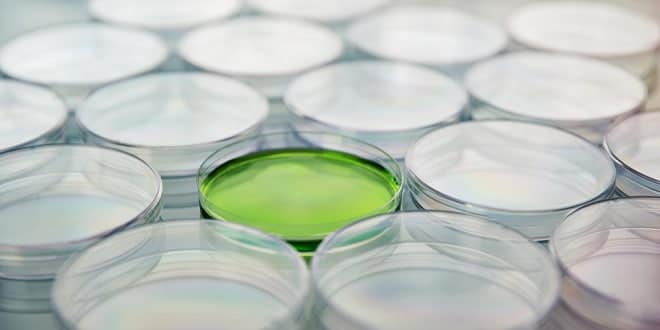Gıda Mikrobiyolojisi
-

Mikrobiyolojik Analiz Raporu Formu
Tarih : Numune Adı Cinsi Deneyin yapılış tarihi Deney laboratuvarı Uygulanan deney metodu Deney sonucu Açıklamalar Deney sonucu Hazırlayan Onay Gıda Güvenliği Ekip Lideri Genel Müdür
-

Yeast Nutrition and Nutrient Use ( Dr. Nichola Hall )
OUTLINE • What is yeast nutrition? • Why is it important? • Current understanding of the needs and challenges • Utilization of nutrients to rectifyidentified challenges WHAT IS YEAST NUTRITION? • Yeast cell physiology – Refers to how yeast cells feed, metabolize, grow, reproduce, survive and ultimately die • Yeast nutrition – Mechanisms of how yeast cells translocate water and essential organic and inorganic nutrients from the surrounding environment, through the cell wall, across the cellular membrane and into the intracellular milieu …
-

Microbial Growth – Kinetics First Order ( FE 206 – Lecture 4 )
FE-206 Food Microbiology1 Spring 2016 LECTURE4 Microbial Growth – Kinetics First Order First Order Kinetics Food microbiology is concerned with all phases Of microbial growth (lag,log, stationary, death phase).Growth curves are normally plotted as the number of cells on a log scale or log10 cell number versus time. Table First order kinetics to describe exponential growth and inactivation Growth Kinetics g can be calculated by g=t/n=(0.3 t)/”log10N-log10N0 “ Example: Initial population is 103 CFU/ml and incerased to 106 cells in 300 min. What is generation time? g=”0.3∗300″ /(6-3)=30 min or…
-

Bacterial Spores ( Endospore )
Bacterial Spores (endospore) Endospores form within the Cell Endospore is dormant stage of some bacterium that allows it to survive unfavorable conditions that would normally be lethal such as extreme drought or heat Endospores are resistant against; Drought Low nutrient conditions Radiation High temperatures Various chemical disinfectants Endospores The spore is a dehydrated, multishelled structure that protects and allows the bacteria to exist in “suspended animation” It contains a complete copy of the chromosome, the bare minimum concentrations of essential proteins and ribosomes, and a high concentration of calcium bound…
-

Factors Affecting Microbial Growth in Food
Factors affecting microbial growth in food (a) Intrinsic factors: These are inherent in the food. They include: pH, water activity, oxidation reduction potential, nutrient content, antimicrobial contents, biological structure (b) Extrinsic factors: Are factors external to the food that affect microbial growth. Factors affecting microbial growth in food (a)Intrinsic factors: These are inherent in the food. They include: Hydrogen ion concentration (pH) Moisture content Nutrient content of the food Antimicrobial substances Biological structures 1. Hydrogen ion concentration (pH) Most bacteria grow best at neutral or weakly alkaline pH usually between…
-

Coliform Analysis in Water / Membrane Filtration
General introduction: Membrane filtration systems are especially used when the sample like drinking water or fruit j uices which can easily pass through the filter and contain really small amount of microorganisms less than 1 CFU/ ml. About coliform bacteria and why do we do this test: Coliform bacteria are present in the environment and feces of all warm-blooded animals and humans. Coliform bacteria are unlikely to cause illness. However, their presence in drinking water indicates that disease-causing organisms (pathogens) could be…
-

Food Microbiology Laboratory Plating Techniques ( Dr. Olcay BOYACIOĞLU )
Experiment 1: Plating techniques Principles of the Procedure Nutrient Agar consists of peptone, beef extract, and agar. This relatively simple formulation provides the nutrients necessary for the growth of a large number of microorganisms that are not excessively fastidious. The beef extract contains water-soluble substances including carbohydrates, vitamins, organic nitrogen compounds, and salts. Peptones are the principle sources of organic nitrogen, particularly amino acids and long-chained peptides. Agar is the solidifying agent. … Kaynak








